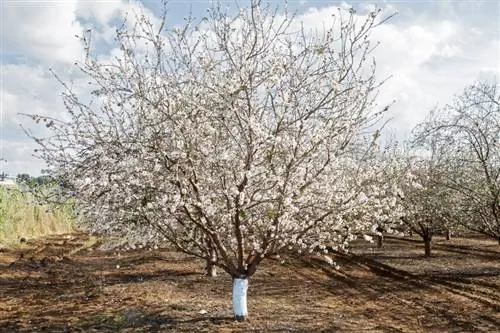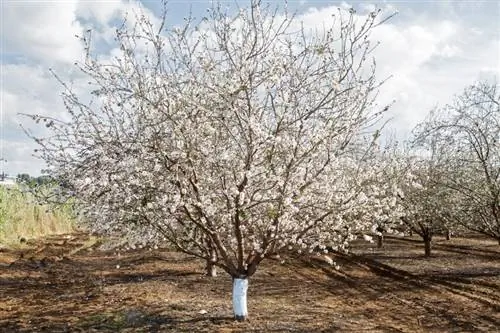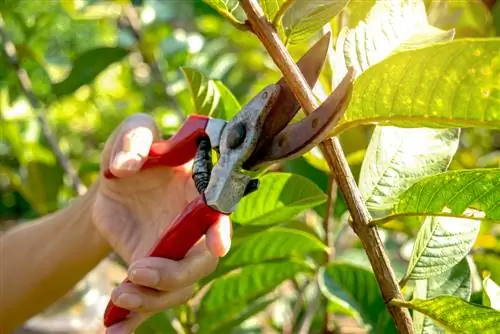- Author admin [email protected].
- Public 2023-12-16 16:46.
- Last modified 2025-01-23 11:20.
The magnificent almond blossom delights every gardener's heart in spring. If young plants have been successfully acclimated to the new location, annual care is particularly easy.

How do I properly care for an almond tree?
To properly care for an almond tree, it needs sufficient watering when rooting, occasional fertilization, pruning after flowering, protection from pest infestation and winter-hardy or cold-protected location conditions. Regular loosening of the soil also promotes the he alth of the tree.
Watering correctly
Almond trees generally love drought. Even long dry periods cannot harm them. However, abundant watering is extremely important for successful rooting of young plants. These should be maintained regularly with sufficient water.
Professional repotting
There are four golden rules to ensure that almond trees survive the change well:
- water freshly repotted plants regularly
- never let it dry out
- Use rich soil (add humus or compost)
- right time (early spring or late summer)
When and how best to cut?
After the magnificent flowering period is the perfect time for effective pruning. This serves to rejuvenate or preserve the almond tree.
What to do if there is a pest infestation or disease?
In the event of a pest infestation, immediate action on the part of the gardener is very important. In this way, the pests are prevented from spreading. In general, there are only a few diseases that threaten the pretty almond tree. Instead of chemical remedies, homemade home remedies often help.
Fertilize correctly
From August onwards, young trees should no longer be fertilized to ensure optimal winter hardiness. Older almond trees generally only need selective care. Annual loosening of the soil is sufficient in this case. Fertilizing is no longer necessary.
Special care in winter
Almond trees are originally heat-loving species. Winter-hardy varieties are now also available for purchase in Germany. These can withstand particularly low temperatures down to minus 19 degrees Celsius.
Late frosts in spring are much more dangerous. The morning spring sun also has a negative effect on almond trees. A protected location or appropriate precautions can remedy this.
Non-hardy varieties can overwinter in pots. Since the almond tree loses its leaves in autumn, cool and dark rooms are suitable for overwintering.
Tips & Tricks
Varieties with southern origins also get used to our climatic conditions. However, they should not spend the first few winter periods outdoors. After about three years, the almond tree can overwinter outside for the first time.






